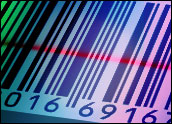
The United States appears to be digging in its heels on the deadline for its rules requiring visitors to its shores to have passports containing biometric information.
The rules, which have already been postponed once, are set to take effect on October 26. They require that after that date, nations in the U.S. Visa Waiver Program issue passports with computer chips that contain biometric information such as facial and fingerprint information.
Security and Interoperability Delays
Currently, citizens from countries in the Visa Waiver Program can enter the United States without incurring the expense in time and money of obtaining a visa.
In a letter to House Judiciary Committee Chairman F. James Sensenbrenner Jr. (R-Wisconsin), European Vice President Franco Frattini and European Council of Ministers President Luc Frieden made a case for delaying the U.S. deadline to Aug. 28, 2006, the date by which all members of the European Union must have biometric facial recognition support in their passports.
“You are surely aware that critical aspects of the biometric technology, such as data security and interoperability of reading devices are still being finalized,” the pair wrote in the letter, a copy of which was obtained by TechNewsWorld.
They added that the process was further delayed by tardy reports issued by the group working up standards for the technology.
Deadline Change Unlikely
“Moreover,” they noted, “the technical reports of the ICAO [International Civil Aviation Organization] came out rather late so that it was impossible to start the establishment of technical specifications and their implementation in an interoperable way much earlier.”
Sensenbrenner, however, threw a cold towel on any hopes that the United States would back off the current deadline.
“With regard to your urging that Congress consider a second extension of the October 26, 2005, deadline, I must advise you that such an outcome is unlikely,” the congressman wrote to the EC officials. “The increased awareness and concern, of both the American public and most members of Congress, regarding continued weakness in U.S. Border Security, will make an additional extension difficult to accomplish.”
“Consequently,” he continued, “I strongly suggest that the European Commission plan without the expectation that there will be an extension of the deadline, and encourage member states to do their best to meet the requirements.”
Largest in Mankind’s History
The U.S. requirement for biometric passports was part of a 2002 law, the Security and Visa Entry Reform Act. And while three years might seem like a long time to implement the measure, it might not be, considering the magnitude of the project.
“If you look at the scale of the operation, it’s probably one of the largest operations in the history of mankind in terms of uniform travel documents,” Kelly Richdale, senior vice president for sales for A4Vision, a biometrics firm in Cupertino, Calif., told TechNewsWorld.
All the 27 visa-waiver countries had to be brought together and agree on uniform standards for documents, for the chip inside the documents and for logical data structure and interoperability.
“The world has never seen anything on this scale before,” she declared. “It’s an amazing feat that they’ve gotten this far this fast.”
Snags Slow Progress
Nevertheless, snags continue to slow progress. One such snag is the ability to read the information on the passport chips. There are two data readers, A and B, Richdale explained, and A can’t always read information coded for B and vice versa.
She added that the EU and U.S. are also at odds over encrypting the data on the passport chips. The Europeans want the information encrypted; the Americans don’t.
Encrypting the data would add complexity and cost to the readers used to scan the passports, but penny-pinching might not be the sole reason for American opposition to encryption. Since the passport chips use Radio Frequency Identification (RFID), skeptics contend the U.S. might want to snatch info from passports at a distance, a clandestine practice that might be thwarted by encryption.
RFID is a means of transferring data via a wireless transmitter embedded in a computer chip.
Proximity Chip
Such concerns, though, stem from a misunderstanding of the type of RFID used by passports, according to Walter Hamilton, vice president and general manager of Saflink, of Bellevue, Wash., and president of the International Biometric Industry Association (IBIA).
“The [passport] chip uses radio frequency technology, but not in the same context as the technology is used, for example, in a transponder in your automobile when you go through a toll booth,” he told TechNewsWorld.
“These types of chips use a method that requires extremely close proximity between the sensing mechanism and the chip, a matter of five or six inches,” he said. “It’s the same technology used in gasoline key fobs.”





















































